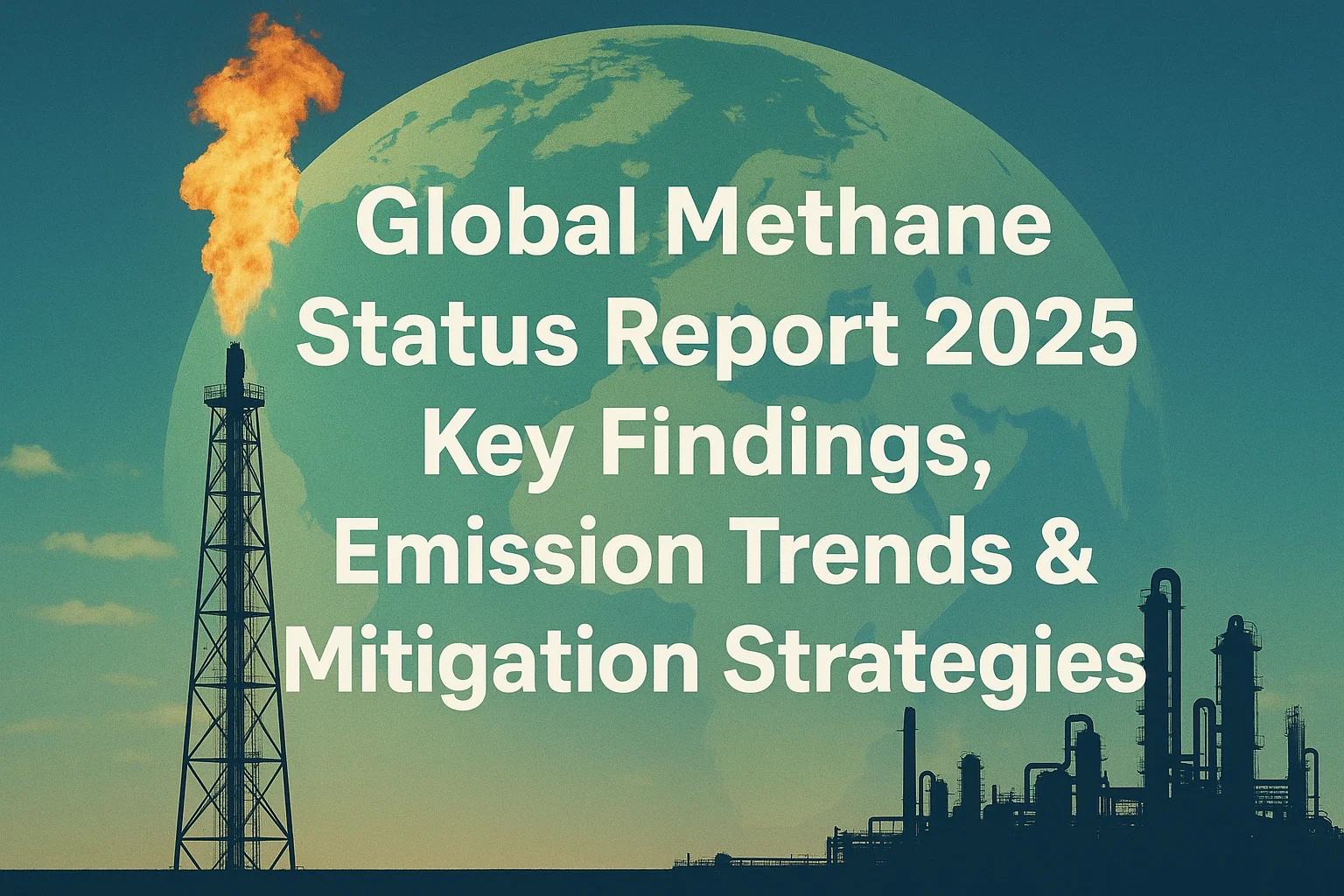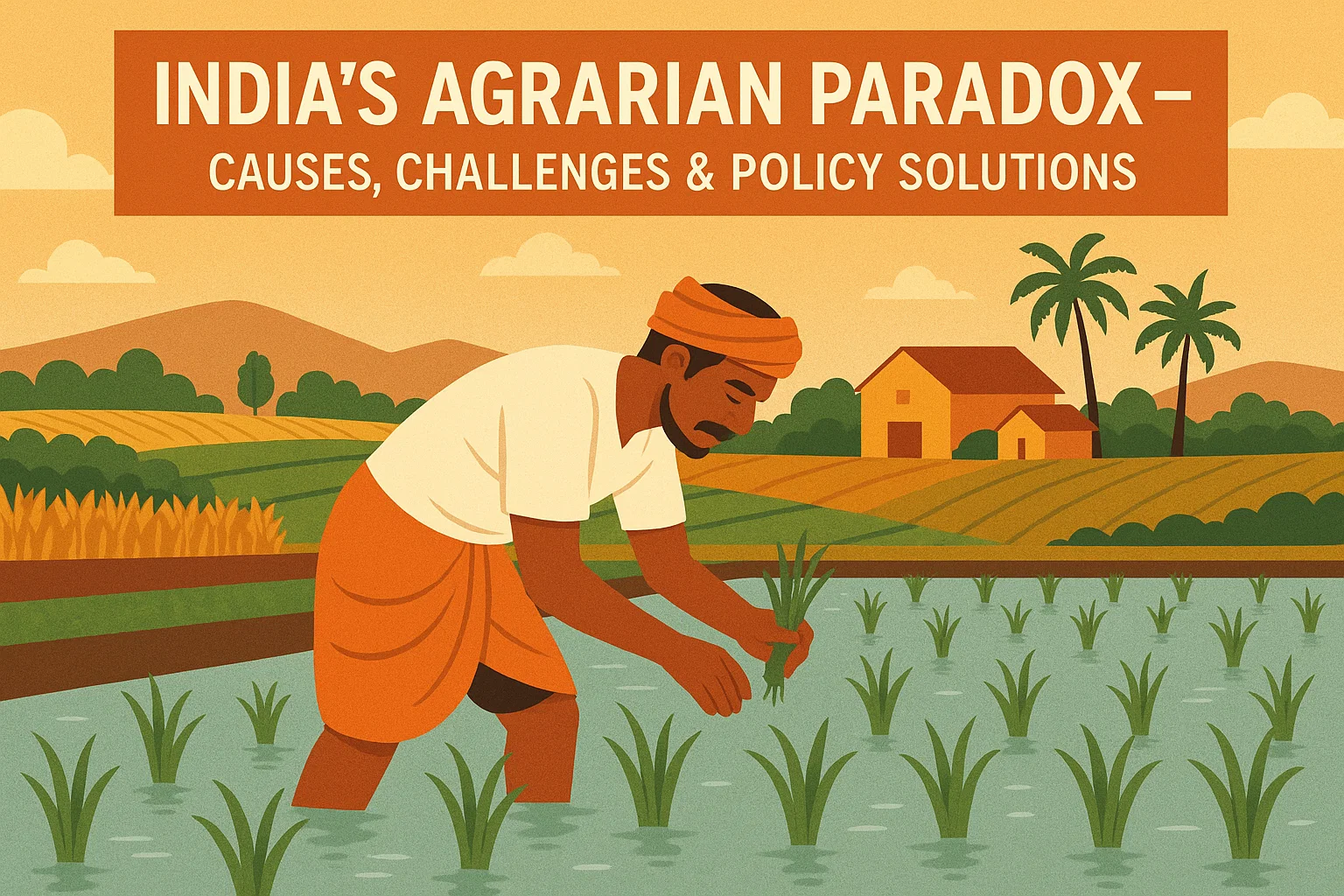Global Methane Status Report 2025: Key Findings, Emission Trends & Mitigation Strategies
Explore the Global Methane Status Report 2025 released at COP30. Learn about methane emission trends, the Global Methane Pledge, sector-wise challenges, and cost-effective strategies to reduce global warming.
Global Methane Status Report 2025
The Global Methane Status Report 2025, released by the UN Environment Programme (UNEP) and the Climate and Clean Air Coalition (CCAC) at COP30 in Belém, Brazil, raises a serious alarm: global methane emissions are not falling at the pace required to meet the Global Methane Pledge (GMP)—a 30% reduction from 2020 levels by 2030. Methane, though shorter-lived than carbon dioxide, is responsible for nearly one-third of current global warming and has a warming impact 80 times greater than CO₂ over a 20-year period. The report stresses that without decisive actions—especially in the energy, agriculture, and waste sectors—the world will miss one of the most cost-effective opportunities for near-term climate action.
What is the Global Methane Status Report 2025?
The report provides the most authoritative global assessment of methane emissions, national policies, mitigation technologies, and projected pathways. It highlights that methane emissions reached ~350 million tonnes (Mt) in 2020, and under existing policies are set to rise to ~370 Mt by 2030, instead of declining.
Key emission sources are dominated by three sectors:
1. Energy Sector
Includes oil and gas operations, coal mines, flaring, venting, and distribution leaks.
This sector is identified as the most cost-effective area for immediate reductions.
2. Agriculture Sector
Responsible for roughly 40% of global methane emissions, primarily from livestock digestion, manure management, and rice cultivation.
3. Waste Sector
Landfills and wastewater generate around 20% of methane emissions, with projections showing a 13% increase by 2030.
The report clearly states that global efforts remain insufficient and policy action is fragmented, slow, and poorly financed.
Global Methane Pledge (GMP): What Does It Aim For?
Launched at COP26, the Global Methane Pledge seeks to:
-
Reduce methane emissions by at least 30% by 2030 (from 2020 levels).
-
Target high-emitting sectors: energy, agriculture, waste.
-
Promote rapid adoption of low-cost, proven technologies.
-
Strengthen Monitoring, Reporting, Verification (MRV) through satellite-based tracking.
-
Integrate methane targets into Nationally Determined Contributions (NDCs) and national Methane Action Plans.
-
Deliver climate, health, and economic benefits by slowing near-term warming and improving air quality.
More than 150 countries have joined the pledge, but implementation remains patchy.
What efforts can be taken to address the challenge?
- Energy Sector: UNEP finds that ~70% of global methane reduction potential lies in energy. Measures such as leak detection and repair (LDAR), venting and flaring controls, upgrading distribution networks, and capturing methane from oil, gas, and coal operations can deliver near-immediate results at low or negative cost. Implementing all feasible measures would cost ~$100 billion annually but yield benefits worth $330 billion.
- Waste Sector: Methane emissions from waste are projected to grow 13% by 2030. Solutions include capturing landfill gas, diverting organic waste to composting or anaerobic digestion, enforcing disposal standards, and promoting household-level composting. These measures could reduce emissions by 13 Mt annually by 2030, with long-term savings through energy recovery and reduced landfill costs.
- Agriculture Sector: Agriculture accounts for ~40% of global methane emissions. Potential reductions include feed additives, improved livestock breeding, water management in rice cultivation, and bans on waste burning. UNEP identifies ~25 Mt reduction potential by 2030, but uptake remains slow due to policy gaps and limited regulation of enteric methane.
- Data and Monitoring: Satellite monitoring has improved, but underreporting persists, especially in fossil fuels. Strengthening MRV systems is critical for accountability and directing resources effectively.
- Finance: Methane-focused finance reached ~$14 billion annually in 2021–22 but falls short of the $127 billion needed per year by 2030. UNEP calls for greater policy certainty, private capital mobilisation, public and philanthropic support, and integration of methane into broader climate and energy investment plans.
Subscribe to our Youtube Channel for more Valuable Content – TheStudyias
Download the App to Subscribe to our Courses – Thestudyias
The Source’s Authority and Ownership of the Article is Claimed By THE STUDY IAS BY MANIKANT SINGH


